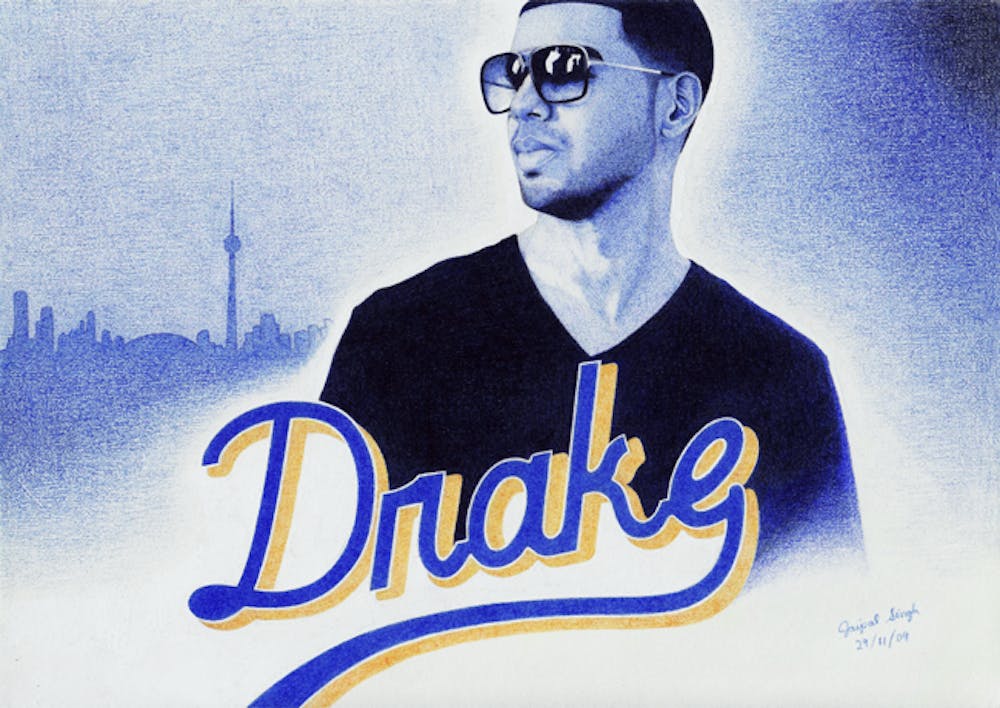Name and Year: Jaipal Singh, 2014 Hometown: Toronto, Canada Degree: Wharton, minor in Art History Medium of Choice: Pencil, pencil–crayon
Street: How did you get interested in the visual arts? Jaipal Singh: I loved drawing from a very early age. When I was really young, I colored with markers and drew from imagination. I studied visual arts in high school and still continue to make artwork on my own time, usually during the summer or on long breaks like Christmas.
Street: Where do you find inspiration? Do you have any favorite artists? JS: In terms of drawing style, I’ve always been a big fan of Michelangelo. The way he painted the human is amazing, as is his attention to detail in his paintings and sculptures.
Street: Do you listen to music while you work? JS: I always listen to music when I work. Music helps me zone out everything around me and allows me to really focus on what I’m doing. I‘m a big fan of hip–hop and rap, but occasionally I enjoy house music as well. If I’m working on a portrait of a musician, I often listen to his or her music to get in the mood.
Street: How do you choose your subject matter? JS: I believe that the best work results from an artist who is really interested in what he or she is making. I find lots of inspiration in drawing my favorite athletes and musicians. Inspiration has hit for a number of reasons. For example, when I saw Rafael Nadal (who I am a huge fan of) win the French Open and Wimbledon Championships in summer of 2010, I wanted to draw him. I did another piece, of Kid Cudi, because I heard a song of his that I found to be really motivational called “Do It Alone.”
Street: Your work is highly realistic. Do you draw from photographs or visualize a composition in your head? JS: Both. Usually when I set out to draw a piece, I have a general framework in mind. For example, when planning to draw Nadal, I knew I was looking for a picture to emulate that showed him in mid–swing, striking the ball. For the Kid Cudi piece, I knew I wanted a picture that showed him in action on stage instead of posing, which is more common in magazines and other photo shoots. There are a few exceptions, for instance, when I do landscape paintings or a still life drawings.
One thing I aim for is continuity among all my pieces, but I also want each piece to be unique in its own right. The composition of the Kobe Bryant drawing is identical to an earlier piece I made of Dwayne Wade, which illustrates the continuity between them, but the subjects are different enough to be regarded separately.
Street: Walk us through the process of making one of your drawings. JS: I’ll outline the process I went through in making my Nadal drawing: I started with a simple pencil sketch of what I wanted the piece to look like. This served as rough outline as I carried forward. Then I drew the figure of Nadal, working from big to small, starting with an outline of the body, then section off the face, the arms, the shirt, etc. and then later I worried about smaller details like eyes, teeth and hair. I did this for the whole piece, completing the drawing in pencil. Once completed, I was ready for color.
In my sketchbook, I create a key of all the colors I expected to use. The most common ones for that piece were blue–tones for the shirt and brown–red tones for the skin. Each of my pencil crayons were numbered from 1–100, so I drew many small, thumbnail sized squares of color and then below each square I wrote down what combination of colors were used to make that square. I used this key as a reference throughout the coloring process.
[photospace]
Street: How long does it take you to finish a sketch? Does it take longer to finish one in color? JS: It really depends on the picture, the medium and the size. Color definitely takes me much more time to complete — a simple pencil sketch requires one to consider value (light vs. dark), whereas a colored drawing also requires one to consider different hues. A simple sketch like the Michael Jackson drawing is only around 4 x 6 inches. It took me one or two days to complete. The Kobe drawing on the other hand measures 20 x 24 inches, and it’s colored, so it took me a few months to complete.
Street: What’s the most difficult aspect of the body to recreate? JS: I think it’s hardest to recreate the face and to keep the general proportionality of the figure intact. The face is difficult because the slightest inaccuracies can completely throw off the semblance of a person’s face. The task is even harder when you are working with famous people, whose faces are highly recognizable.
Street: Where do you see your work heading in the future? JS: I see myself continuing to draw and paint for the rest of my life. I want to get more into oil paints. I’ve done much more work in pencil and ink simply due to their clean, easy–to–use, no–setup requirements. However, I think paint is a great medium that I will experiment with more in the future.







